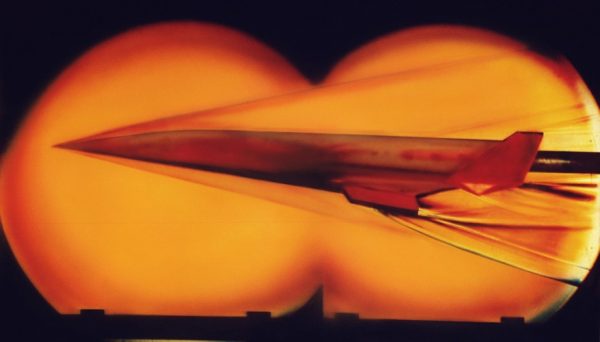Background
For over twenty years the F-111 provided the Australian Defence Force with a strike capability with the strategic reach to provide Australia with an independent strike option should deterrence fail. With the retirement of the long-range F-111, Australia’s future air strike capability now rests in the capabilities of the F/A-18F Super Hornet and F-35A, both equipped with appropriate long-range strike weapons and supported by a capable air-to-air refueling force of KC-30A aircraft; the air-to-air refueling force necessary to extend the unrefueled range of both the F/A-18F Super Hornet and the F-35A to achieve the desired strategic reach.
While Australia’s geo-political circumstances and regional threats are much changed from those which existed in 1963 when Australia committed to acquire the potent F-111 air strike capability, they are now more complex and much less straightforward than the Cold War heritage scenarios of the 1960s. But one aspect remains unchanged; Australia’s strategic geography, where strategic reach continues to support the case for an independent strike capability. The ability to strike at range brings a new dimension into any unfolding strategic scenario which, in itself, may often deter escalation into armed conflict. While in the event of escalation occurring, the absence of a long-range strike capability both limits Australia’s options for strategic maneuver and concedes to an adversary the ability to dictate the terms of engagement.
An independent strike capability expands the range of options to achieve Australia’s strategic ends; signals a serious intent and commitment about Australia’s national security; and has the capacity to influence strategic outcomes short of resorting to armed conflict.
Joint Strike
Conceiving, planning, programming and delivering a credible strike capability is not easy. While some elements such as long-range strike weapons can be bought off the shelf, the integration of the various elements of a strike capability is complex and takes time before the conception develops into a mature and credible military capability. But a strike capability without the enabling capabilities such as electronic warfare support, surveillance support and air-to-air refueling is of little utility, hence enabling capabilities must also be part of the acquisition plan.
Plus, there are the doctrinal, C2, training and sustaining elements of the capability to consider. In short, the complexity and time required to build a nation’s strike capability is such that a government has little option other than to retain a strike capability within a nation’s force structure as, like many other elements of national power, the maturation timeframe for a strike capability is measured not in years but in decades.
There are also important lessons flowing from the last two decades of operations in Iraq and Afghanistan. These operations have illustrated the need for an integrated and sophisticated targeting process, for without perceptive and sophisticated targeting, strike operations achieve few useful outcomes. Targeting is intelligence-led and fundamentally joint in nature and the experience gained from the past two decades of air operations will be invaluable in establishing Australia’s future long-range strike capability.
While the speed, reach, responsiveness and flexibility of an air strike capability are compelling arguments for Australia to retain an air strike capability within its order of battle, there are also other military capabilities that extend strike operations into the joint arena. The evolution of Australia’s strike capability will also need to consider the contribution from evolving technologies, such as electronic warfare, unmanned systems, and of the contribution from new technologies which not only seek to employ traditional kinetic effects but also non-kinetic effects. A sophisticated strike capability seems a continuing and essential arrow in Australia’s quiver of national power.
Aim of the Seminar
This seminar seeks to build a common understanding of the need for an independent joint strike capability to provide Australia with a powerful and potent deterrent and a means of demonstrating strategic intent. It will highlight the impact on the national, campaign, operational and tactical levels, and discuss the ways joint strike can add a further dimension to future Australian Defence and national security policy.
It will provide a historical perspective on the development of the Royal Australian Air Force’s strike capability dating back to World War 2, and look to partner air forces as to how they have developed and employed a strike capability in recent campaigns.
We will hear the perspectives of the Australian army, navy, and the joint commanders, as well as contributions from our coalition partners in the United States and United Kingdom, with the emphasis on gaining a better understanding of the strike options available and of the best way of delivering a balanced range of strike capabilities across the Australian Defence Force.
The seminar will highlight some of the emerging technologies, not just in the weapons but also in the enabling support, planning and targeting systems. It will assess the impact on training systems and on the role of modelling and simulation in the optimising and developing a mature and sophisticated long-range strike capability.
The seminar will also serve as an opportunity to provide an industry perspective on joint strike and, in particular, the role industry can play as a fundamental input to capability. It will highlight the opportunities associated with co-operative programs and the potential to contribute to payload and seeker technologies.
Above all, the seminar will emphasise the impact of a joint strike capability on a broader strategy of deterrence. This will involve discussion of both conventional and nuclear strike options and the ways and means of delivery, and their potential impact on the balance of power in the region.
WillliamsStrikeSeminar23Aug18 2
The hypersonics photo is credited to NASA.


